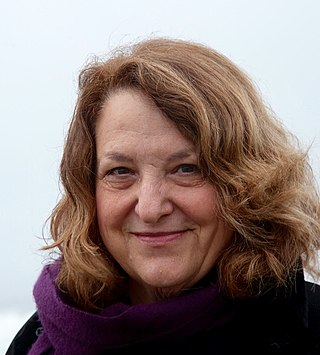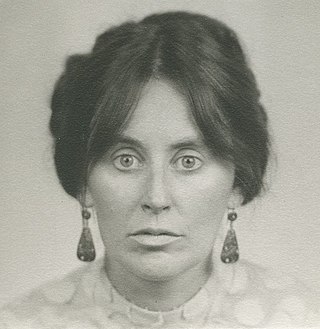Related Research Articles

The Los Angeles County Museum of Art (LACMA) is an art museum located on Wilshire Boulevard in the Miracle Mile vicinity of Los Angeles. LACMA is on Museum Row, adjacent to the La Brea Tar Pits.

The Museum of Contemporary Art, Los Angeles (MOCA) is a contemporary art museum with two locations in greater Los Angeles, California. The main branch is located on Grand Avenue in Downtown Los Angeles, near the Walt Disney Concert Hall. MOCA's original space, initially intended as a "temporary" exhibit space while the main facility was built, is now known as the Geffen Contemporary, in the Little Tokyo district of downtown Los Angeles. Between 2000 and 2019, it operated a satellite facility at the Pacific Design Center facility in West Hollywood.

The Hammer Museum, which is affiliated with the University of California, Los Angeles, is an art museum and cultural center known for its artist-centric and progressive array of exhibitions and public programs. Founded in 1990 by the entrepreneur-industrialist Armand Hammer to house his personal art collection, the museum has since expanded its scope to become "the hippest and most culturally relevant institution in town." Particularly important among the museum's critically acclaimed exhibitions are presentations of both historically overlooked and emerging contemporary artists. The Hammer Museum also hosts over 300 programs throughout the year, from lectures, symposia, and readings to concerts and film screenings. As of February 2014, the museum's collections, exhibitions, and programs are completely free to all visitors.

John Anthony Baldessari was an American conceptual artist known for his work featuring found photography and appropriated images. He lived and worked in Santa Monica and Venice, California.

The Institute of Contemporary Art, Los Angeles, formerly known as the Santa Monica Museum of Art (SMMoA), is a contemporary art museum in Los Angeles, CA. As an independent and non-collecting art museum, it exhibits the work of local, national, and international contemporary artists. Until May 2015, the museum was based at the Bergamot Station Arts Center in Santa Monica, California. In May 2016, the museum announced an official name change to the Institute of Contemporary Art, Los Angeles and its relocation to Los Angeles's Downtown Arts District. The museum reopened to the public in September 2017.

Lynn Hershman Leeson is a multimedia American artist and filmmaker. Her work combines art with social commentary, particularly on the relationship between people and technology. Leeson is a pioneer in new media, and her work with technology and in media-based practices helped legitimize digital art forms. Her interests include feminism, race, surveillance, and artificial intelligence and identity theft through algorithms and data tracking. She has been referred to as a "new media pioneer" for the prescient incorporation of new science and technologies in her work. She is based in San Francisco, California.
Violet Hopkins is an American painter. She holds a BFA from the University of Texas at Austin, and an MFA from the California Institute of the Arts, Valencia. Hopkins work often draws inspiration from found images of the natural and scientific world, using ink, pencil and paint to transform them into color-rich, dynamic scenes that incorporate both abstract and figurative elements.

Jeffrey Deitch is an American art dealer and curator. He is best known for his gallery Deitch Projects (1996–2010) and curating groundbreaking exhibitions such as Lives (1975) and Post Human (1992). Deitch was director of the Museum of Contemporary Art, Los Angeles (MOCA) from 2010 to 2013. He currently owns and directs Jeffrey Deitch Gallery, an art gallery with locations in New York and Los Angeles.
Liz Larner is an American installation artist and sculptor living and working in Los Angeles.
William Leavitt is a conceptual artist known for paintings, photographs, installations, and performance works that examine "the vernacular culture of L.A. through the filter of the entertainment industry...drawing on 'stock environments' and designs of films as well as the literature of the place." A critical figure in the West Coast conceptual art movement of the late 60s, Leavitt himself has managed to maintain a low profile. "Over the last 40 years, William Leavitt has made a name for himself as an influential artist while staying so far out of fame's spotlight that his hard-to-categorize works have been all but invisible to the public," wrote the LA Times. While his work is collected by high-profile artists such as John Baldessari and Mike Kelley, Leavitt himself has eschewed celebrity.

The Broad is a contemporary art museum on Grand Avenue in Downtown Los Angeles. The museum is named for philanthropists Eli and Edythe Broad, who financed the $140 million building that houses the Broad art collections. It offers free general admission to its permanent collection galleries. However, not all of its events are free and admission prices may vary by exhibit and/or by event. It opened on September 20, 2015.
Michael Govan is the director of the Los Angeles County Museum of Art. Prior to his current position, Govan worked as the director of the Dia Art Foundation in New York City.
Paul Schimmel is an American curator of contemporary art based in Los Angeles. Schimmel served as the chief curator of The Museum of Contemporary Art, Los Angeles (MOCA), from 1990 until 2012, where he organized numerous exhibitions. From 2013 through 2017, he was a vice president and partner with the art gallery Hauser & Wirth and co-founder of Hauser Wirth & Schimmel in Los Angeles. In late February 2017, Schimmel departed from the Hauser & Wirth enterprise, including Hauser Wirth & Schimmel in Los Angeles, with no public comment on his behalf.

Harry Dodge is an American sculptor, performer, video artist, professor, and writer.
KCHUNG is a freeform radio station in the Chinatown neighborhood of Los Angeles as KChung Radio 1630 AM. KCHUNG broadcasts over 200 shows a month on 1630 AM and online through the station's website. The station operates according to what are generally known as the Part 15 rules, which cover very-low-power RF transmissions without a license.
Jennifer Chihae Moon is a conceptual artist and life-artist living in Los Angeles. She was born in Lafayette, Indiana and completed her bachelor's degree at UCLA and master's degree at Art Center College of Design.
Margaret Honda is an American experimental filmmaker and artist based in California. She began her career in sculpture before turning to film.

The Marciano Art Foundation was a non-profit arts foundation located on Wilshire Boulevard in the Mid-Wilshire neighborhood of Los Angeles, California. It was established by the co-founders of Guess, Maurice Marciano and Paul Marciano. The Marcianos opened the museum on May 25, 2017 as an exhibition space to display their 1,500-piece collection of contemporary art. The museum closed indefinitely in November 2019 after workers attempted to unionize. The Marciano Foundation released a statement a month later that the closure was permanent.

Moira Roth was a feminist art historian and art critic who was Trefethen Professor of Art History at Mills College in Oakland, California from 1985 to 2017. She taught at the University of California, San Diego from 1974 to 1985. She was educated at the London School of Economics in England, and received a B.A. in sociology and an M.A. from New York University and a PhD from the University of California, Berkeley in 1974. She wrote extensively on contemporary art, editing The Amazing Decade: Women and Performance Art in America 1970-1980, A Source Book, published by Astro Artz (1983). Her collection of essays, Difference/Indifference: Musings on Postmodernism, Marcel Duchamp and John Cage, was published, with a commentary by Jonathan D. Katz, by Psychology Press (1998), exploring the construction of masculinity and conflicting identities. She received a Lifetime Achievement Award from the Women's Caucus for Art in 1997, and the National Recognition in the Arts Award from the College Art Association in 2006. She appears in Lynn Hershman Leeson's 2010 documentary film !Women Art Revolution.
Danielle Dean is a British-American visual artist. She works in drawing, installation, performance and video. She has exhibited in London and in the United States; her work was included in an exhibition at the Hammer Museum focusing on new or under-recognized artists working in Los Angeles.
References
- ↑ "Authors: Jori Finkel." The Art Newspaper. Retrieved July 14, 2016.
- ↑ Culture Monster: Jori Finkel." Los Angeles Times. Retrieved July 14, 2016.
- ↑ "Artis 16th Research Trip Participants." Archived 2016-08-08 at the Wayback Machine Artis.org. Retrieved July 14, 2016.
- ↑ “Weddings: Jori Finkel and Michael Lubic.” The New York Times. Sept. 14, 2008.
- ↑ "In the Green Room: Arts Writer Jori Finkel." Zocalo Public Square Bulletin. April 4, 2014."
- ↑ “In Memory: Bruce Wolmer,” Art + Auction, Nov. 1, 2010.
- ↑ "Artis 16th Research Trip Participants." Archived 2016-08-08 at the Wayback Machine Artis.org. Retrieved July 14, 2016.
- ↑ Finkel, Jori. "Cruise Ship Art Sales Lead to Lawsuits, Allegations.” The New York Times. July 6, 2008.
- ↑ Guide to Cruise Ship Art Auctions, Fox News, September 27, 2013
- ↑ Finkel, Jori. "Museums Solicit Dealers Largess." The New York Times. Nov. 18, 2007.
- ↑ Pogrebin, Robin. "Art Galleries Face Pressure to Fund Museum Shows." The New York Times. March 7, 2016.
- ↑ Finkel, Jori. “Watts House Project Under Fire.” The Los Angeles Times. April 8, 2012.
- ↑ --. “Edgar Arceneaux Resigns as Executive Director of the Watts House Project,” Artforum. April 10, 2012.
- ↑ “Los Angeles Times Lays Off At Least 11 Employees (Exclusive),” Variety, June 28, 2013
- ↑ Kirsch, Corinna. "Museums Fire Back at the Los Angeles Times for Cutting Art Reporter Jori Finkel." Art F City. July 10, 2013.
- ↑ Williams, Maxwell. “Top Museum Directors Protest L.A. Times Arts Reporter Layoff.” The Hollywood Reporter. July 20, 2013.
- ↑ Duray, Dan. “L.A. Times Editor Responds to Jori Finkel Layoff Protests; Petition Gains Signatures.” The New York Observer. July 18, 2013
- ↑ Williams, Maxwell. “Top Museum Directors Protest L.A. Times Arts Reporter Layoff.” The Hollywood Reporter. July 20, 2013.
- ↑ Duray, Dan. “L.A. Times Editor Responds to Jori Finkel Layoff Protests; Petition Gains Signatures.” The New York Observer. July 18, 2013
- ↑ Finkel, Jori. "Pardon Me But the Art is Mouthing Off." The New York Times. Nov. 27, 2005.
- ↑ Museum archive, “Identity Theft at the Santa Monica Museum of Art” May 19-Aug. 11, 2007. Retrieved July 12, 2016.
- ↑ Myers, Holly. “Time to Analyze the Roles We Play." The Los Angeles Times. June 8, 2007.
- ↑ Myers, Holly. “Time to Analyze the Roles We Play." The Los Angeles Times. June 8, 2007.
- ↑ Valdez, Sarah. “In the Land of Make-Believe.” Art in America. November 2007.
- ↑ Subotnick, Ali. “Ali Subotnick's Top Ten: 2007.” Artforum. December 2007. Retrieved July 12, 2016.
- ↑ The Editors of Vulture. May 28, 2019.
- ↑ Publishers Weekly. . April 2019.
- ↑ Nys Dambrot, Shana. Book Pick: Jori Finkel's It Speaks to Me L.A. Weekly, May 28, 2019.